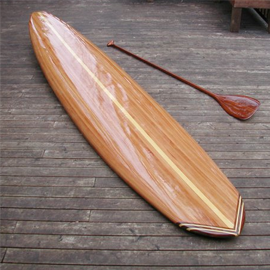 I first had a go at Stand Up Paddleboarding dating back to 1987 on one of my longboards with a paddle but truly took to the sport in 1998 on a specialist large converted surfboard that I designed and now I am enthralled by the growth of the sport into SUP as it is today. I now SUP in Whitstable, opposite my house and also along the Kent coast where I enjoy exploring the waves and small coves in particular in the Isle of Thanet.
I first had a go at Stand Up Paddleboarding dating back to 1987 on one of my longboards with a paddle but truly took to the sport in 1998 on a specialist large converted surfboard that I designed and now I am enthralled by the growth of the sport into SUP as it is today. I now SUP in Whitstable, opposite my house and also along the Kent coast where I enjoy exploring the waves and small coves in particular in the Isle of Thanet.
SUP is an acronym that stands for “standup paddleboarding” and it is taking the water sports world by storm. Standup paddleboarding is quickly becoming the water sport of choice and certainly is the fastest growing. Standup paddle boarding has its roots where all board sports have their beginnings, in Hawaii. Known as Hoe he’e nalu, standup paddle surfing actually has ancient roots but became popular in modern times among surf instructors and photographers trying to get a higher vantage point than the surface of the water.
Basically, SUP uses a surf style board and a long paddle. In that regard it is a cross between canoeing and surfing. While originally made popular by surfer Laird Hamilton as he used the paddle to help him catch the towing waves found in Hawaii, SUP is not only for surfing any longer. Stand up paddling can be done in a variety of forms such as on flat water protected lakes to easy beach paddling, to open water paddling, and all the way to surfing waves.
